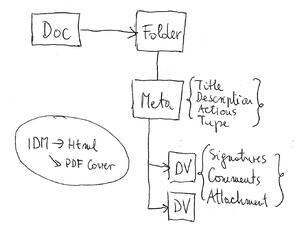Make it a million
When we talk about the size of the ITER enterprise, the data stored on the ITER Collaborative Network, in short ICP, is a good scale to measure by. This week, ICP registered the one millionth object stored in its database—which is, of course, a reason to celebrate.
ICP is both a document management and a document workflow system. Whenever you submit a Word document to the ITER Document System (IDM), the document is saved in a folder. IDM represents the biggest proportion of stored data, followed by Tickets, the Configuration Management Database, and E-forms.
It all started with the introduction of the first version of IDM, which went online in October 2004 as the first web-based document management system in ITER. It superseded an old cumbersome document management system which had collected 10,000 documents in ten years.
The new web-based system is much easier to use: in its second year of operation, more documents were uploaded than in the ten preceding years. Other applications followed and the last 500,000 objects were created in only nine months. Running on a single server a few years ago, ICP is now distributed among several servers sharing extreme loads in order to provide high availability 24 hours, seven days a week. "Users of the ICP include the 800 people—employees plus subcontractors—working at the ITER Cadarache site, and another 2,000 people working from the Domestic Agencies," says Robert Jober, the new man in charge of Data Management Systems Integration at ITER. "At any given time we have around 200 persons accessing the servers, and an average of 2,500 new objects are created every day." This daily figure is comparable to the number of documents created during ITER Engineering Activities in twelve months in 1997. And the rate of uploads continues to accelerate. "It will take significantly less time to reach the two million mark," says Robert.



